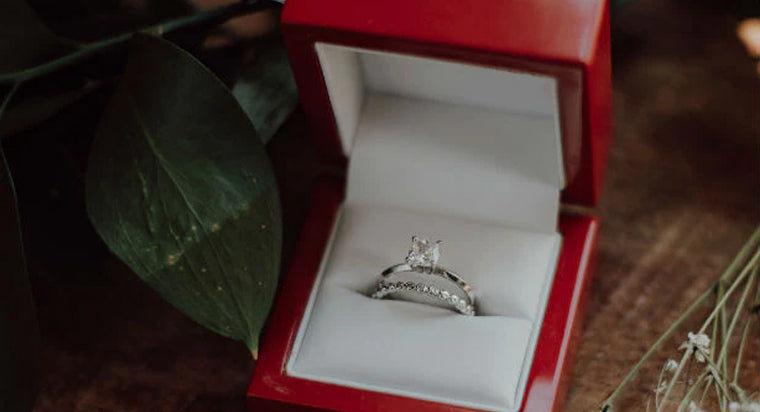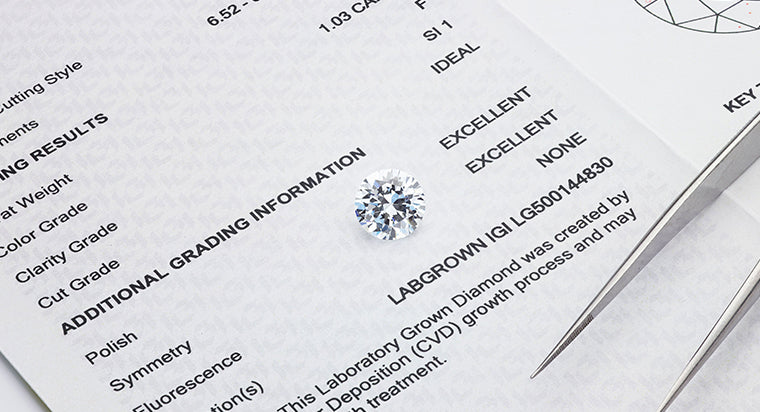Lab Diamond Myths

Natural diamonds are rare and require a lot of heavy mining, which inspired scientists in 1954 to perfect methods for creating lab-created diamonds. The only difference between lab-created diamonds and natural diamonds is that one is created in a lab and the other in the earth. Lab grown diamonds feature the same chemical composition, optical properties and physical features as natural diamonds.
TABLE OF CONTENTS
Creating Lab Grown Diamonds
The process to create a lab grown diamond is similar to the process to create natural diamonds–the only difference is one occurs within the earth’s crust and the other occurs in a laboratory. To create a lab grown diamond, the manufacturing process replicates conditions that create a natural diamond–extreme temperatures and pressures that turn carbon into a diamond.
Manufacturers have two ways to create lab diamonds–High Pressure High Temperature (HPHT) and Chemical Deposition (CVD):
Symptoms of an infected ear piercing include:
- HPHT: A diamond “seed” is added to carbon. A diamond seed is a small natural diamond fragment that can undergo both extreme temperature and pressure conditions. The HPHT diamond growth process subjects diamond seed and carbon to extreme temperatures (in excess of 1,300-1,600 degrees celsius) and pressures (one million pounds per square inch) to replicate the extreme heat and pressure conditions deep within the earth where natural diamonds form. The carbon forms around the diamond seed and is then cooled.
- CVD: The chemical vapor deposition system begins with a diamond “seed.” It’s important to select the strongest and highest grade (in color and clarity) natural diamond bit. During the CVD process, the vacuum chamber in which the diamond seed is placed fills with gasses that are heavy in carbon and is then heated to well over 1,000 degrees. The intense heat then turns the gasses into “plasma.” The plasma is what helps “build” the layers of the diamonds.
Lab Diamond Myths vs. Truth
There are plenty of lab diamond myths floating around, so let’s sort these out.
Myth 1: Lab diamonds are not real, they are fake
Truth: Lab diamonds are optically, chemically and physically the same as earth-mined diamonds. One is created in a lab and the other in the earth. To create a lab grown diamond, the manufacturing process replicates conditions that create a natural diamond–extreme temperatures and pressures that turn carbon into a diamond.
Myth 2: Lab diamonds are of inferior quality
Truth: Lab grown diamonds are of the same quality, if not better than mined diamonds. The diamond seed used to create lab-grown diamonds is often a high-quality diamond bit. Large, high-quality natural diamonds are rare and more costly. You’ll be able to get a larger, higher-quality lab-grown diamond and make the most of your budget.
Myth 3: The color of lab diamonds changes with time
Truth: No, a lab-grown diamond’s color remains the same over time. Natural diamonds do not yellow with age, and lab-grown diamonds won’t either because they have the same chemical makeup.
Myth 4: Lab diamonds cost less because of their poor quality
Truth: Lab diamonds cost less because they are created in sophisticated labs, which means they have a faster turnaround time, less impact on the earth, use less labor and are easier to track the supply chain. All of these factors add up so you’ll pay less for a high-quality lab diamond engagement ring.
Myth 5: Lab diamonds look different from earth-mined diamonds
Truth: Even a trained gemologist will find it difficult to differentiate between the two. The differences between natural diamonds and lab grown diamonds cannot be seen with the naked eye. Natural diamonds have tiny amounts of nitrogen but lab diamonds do not. This is one way gemologists differentiate between lab grown or natural.
Myth 6: Lab diamond and Cubic Zirconia are the same
Truth: Lab diamonds are made of carbon–it is 100% real, while Cubic Zirconia is a diamond simulant. Cubic zirconia is also a lab-created stone, but its crystal structure and chemical composition is completely different from a lab diamond. While lab-grown diamonds are made of carbon, cubic zirconia is the cubic crystalline form of zirconium dioxide
Myth 7: Lab diamonds are not certified
Truth: World-renowned organizations, such as GIA and IGI grade and certify lab diamonds. The International Gemological Institute (IGI) was established back in 1975, and now has headquarters all over the globe. The independent laboratory studies colored stones along with lab grown diamonds to determine authenticity. Following an assessment, the experts compile an IGI lab grown diamond report to outline the results. Vendors can display the IGI certificate along with the IGI diamond, allowing potential buyers to verify the diamond is authentic
Lab Grown Diamond Benefits
You’ll find lab diamonds in all types of jewelry–from a simple solitaire necklace to sparkling stud earrings to extravagant engagement rings. Their popularity continues to increase because of the long list of benefits:
- Price: Lab grown diamonds are more affordable in comparison to natural diamonds. You can expect to pay 15% to 30% less on a lab diamond than you would on a mined diamond. This price difference is because mined diamonds go through a longer supply chain and require more costly resources.
- Durability: They remain the hardest material on earth—a 10 on the Mohs hardness scale—and are as difficult to chip as a natural diamond.
- Ethically sourced and conflict free: You can pinpoint the origin of lab grown diamonds and lab diamonds are widely available.
- Environmentally friendly: The environmental impact is much reduced, mined diamonds have a huge impact upon environments, landscapes and communities.
FAQs
Are lab diamonds really ethical?
Do lab diamonds sparkle?
Are lab diamonds and cubic zirconia the same?
Is a lab grown diamond the same as moissanite?
Are lab grown diamonds durable?







